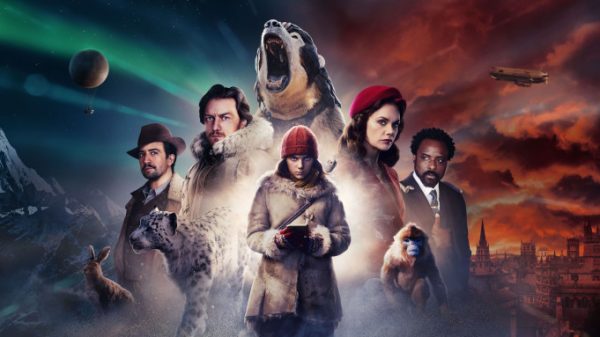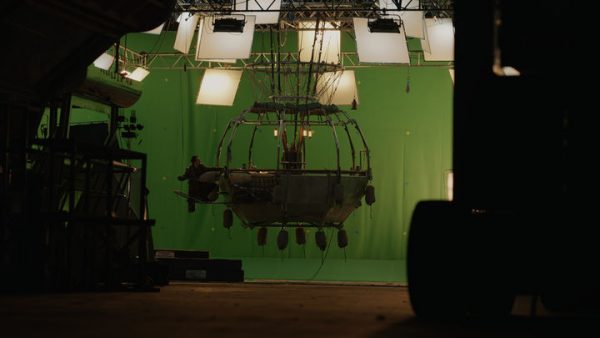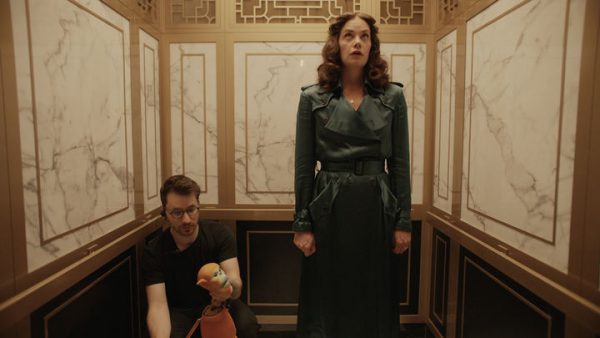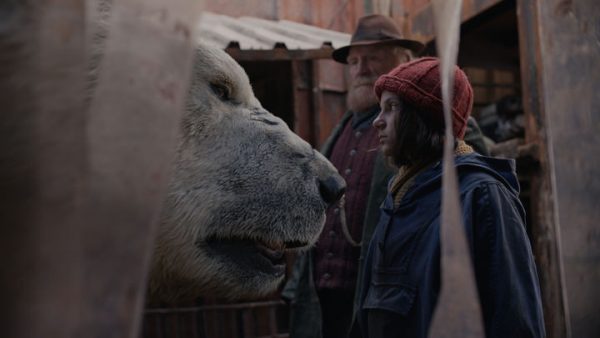Harrison Abbott chats with VFX supervisor Shawn Hillier…
A costly collab between HBO, BBC Studios, New Line Cinema, and Bad Wolf: His Dark Materials has a lot of resources propping it up. So, as you would expect, the production value on this Philip Pullman adaptation is absolutely top-notch – boasting ornate sets, lavish costume-design and an utterly star-studded cast.
One aspect that has been singled out by all reviewers however, is the cinema-standard CGI. Indeed, many have noted that the effects on display here are on a par with contemporary blockbusters and that it serves as a testament to just how far TV has come in the last few years.
To give us a behind-the-scenes look on this aspect of the show, Framestore kindly gave us an exclusive interview with supervisor Shawn Hiller (Star Trek, Pacific Rim, Jurassic World). Among other things, we discussed the evolution of CGI in episodic storytelling, how to create believable set-extensions and, Framestore’s signature specialty: creature animation.
Our discussion is only based on the first couple of episodes, so it’s pretty light on spoilers. Enjoy!
To kick things off, would you be able to talk about your journey through the VFX industry and how you made it into your current position?
I started off doing commercials and music videos back in the early 90s, over at some smaller studios, before getting a call to work at ILM on Star Wars. I ended up staying there for about 15 years, working on many features including Pirates of the Caribbean, Harry Potter, Star Trek, Transformers and Jurassic World. When I was chatting with Framestore about working on His Dark Materials, I was immediately excited about the possibility of what we could do with the visual effects technology available today. Especially in an episodic format.
Not that long ago, it was generally accepted that the standard for TV effects was automatically lower than that of their movie counterparts, due to budgetary and time constraints. But increasingly – with blockbuster shows like Game of Thrones and now His Dark Materials – we’re seeing those perceptions challenged. From your perspective as a supervisor, do you have any thoughts on how television VFX has evolved? Are you seeing more work crop up in this arena?
Absolutely. It has really evolved over the past few years. The turnaround time in TV is generally quicker than it is for a feature and so quality [used to] suffer a bit. However, with advancements in technology, it is now possible to produce much better […] visual effects at a faster pace.
And are there any big differences in terms of working on those two mediums? Or do you approach them in the same way?
For features, it is quite common to have artists that are focused on a specific task or discipline, whereas on TV you will frequently find them wearing many hats. Due to the scale of this particular show, and the type of shots [involved] in each sequence, we primarily relied on the feature style pipeline. And most of the team came from features anyway.
However, at Framestore there are many artists that are able to do multiple tasks and because of the turnaround time on this show, flexibility was given to work a bit outside the box. There were a few generalists on the show.
It struck me that Framestore is the only VFX vendor attached to His Dark Materials. Am I right in thinking that’s quite unusual? What is the typical arrangement for a project of this scale?
It is a bit unusual for a project of this size. However, there is a huge benefit to keeping a show like this at Framestore [which has] multiple locations. In the case of His Dark Materials, the show was split between London and Montreal, with about 700 crew members working across the episodes. Because we are one company, we are able to quickly share assets and setups between each office. This allowed us to turn things around much quicker.
You just mentioned that there were 700 crew members working between episodes. How did you coordinate all those moving parts?
We heavily relied on our team of producers, coordinators, and PAs to help us stay scheduled. It was by no means an easy task, with 2000+ shots to keep on top of, but they did a great job of breaking it down episode-by-episode and keeping us on target.
Of course, Framestore nabbed their first Oscar for the 2008 movie adaptation of The Golden Compass. Did this pre-existing history with the IP give the studio an edge? Were there any specific lessons that were learned the first time around that Framestore wanted to apply here?
Looking back at The Golden Compass, we realized we were in a great position to improve on what was done back in 2008. For one thing, the narrative really benefits from an episodic format and there is so much more we can do with today’s visual effects […] Framestore has also made quite a lot of advancements in terms of creature technology, which has allowed us to enhance the story even further with improved VFX.
In terms of the set-extensions, how much of what we’re seeing in His Dark Materials is actually there? Is it a case of almost every location has some digital touches?
Yeah, most of the exteriors were shot around Wales or at the shooting stage: Bad Wolf Studios. We also shot some plates in Iceland, however pretty much every location had some kind of digital extension. For the North mountain exterior, we built a full landscape of CG mountains that was built into all the sets. So, we were covered for every possible angle.
And what kind of considerations do you have to make when working on soundstage sequences? How do you make them look like convincing exterior environments?
The onset crew was a huge help in terms of getting the reference data we needed. The northern lights were especially tricky. We shot those bits with interactive lighting and then [translated] that cycle into CG. We also had LiDar [Light Detection and Ranging] for every set.
Once we replicated the lighting onto our CG extension, we realized we had to make some adjustments depending on the style of the shot. Whether it was the look or distance of the Northern Lights, the scale of the shot, or if we were adding CG snow.
Moving on to the dæmons, I read a fascinating Metro piece about how rudimentary puppets were used as references for all of the animal characters. Could you elaborate upon this process and the benefits of doing it in this way?
The puppeteers were fantastic. They were super helpful in giving the actors a reference for things like scale and eye lines, whilst also [aiding] the camera operator with framing. Plus, it was really useful as a lighting reference.
We also shot a clean pass without the puppets for cleanup work. Most of what you see in the show had a puppeteer that we painted out.
Was there a particular animal that took more work than the others, or that you are especially proud of?
Definitely Iorek Byrnison. It was a lot of fun working on that character because he plays such an important role throughout the show. We’ve got some really beautiful close-ups of him and wanted to spend a good amount of time putting on the polish.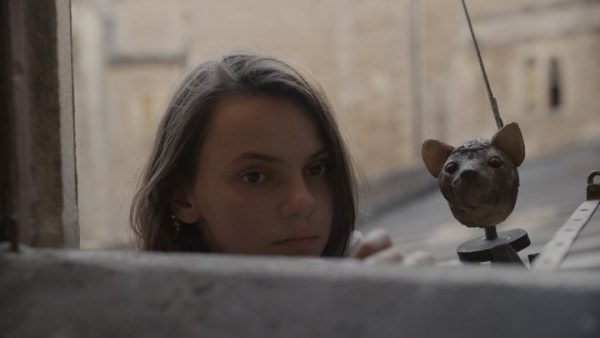
I don’t recall seeing any morphing to show Pan’s transition between forms. Is that coming in a later episode, or was it a conscious decision not to show that particular effect?
Oh, it’s coming! We did quite a few daemon transition shots, as well as ‘’dust deaths’’. This is the really interesting part of the narrative, as it shows the connection between the creature and the child. It’s nice when we can use visual effects to help tell that story.
There can be several dæmons on screen at any given time, even if they’re just background details. In fact, everyone in the show has one of these companions, so how many different creatures did you end up doing? How did you meet that demand?
We had quite a bit of live-action reference for every CG animal that we created. With the large volume of daemon shots, we felt that the best approach was to generate a library of about 60 variants, each with different animation cycles. Using Framestore’s Nuke tools, we were then able to pull those [stock] effects and modify the angles and lighting, according to the given plate.
[So] for the foreground hero daemons, we had bespoke animations. Meanwhile, for the background daemons we pulled from that library.
One question I always like to ask is if there are any obscure VFXs that might go unnoticed by the average viewer. Is there anything here that people might be surprised to learn is actually CGI?
It’s always nice when the viewer is not taken out of the story due to obvious CGI. For us, it was really important that the creatures felt like real animals and brought a certain mannerism and personality through their expressions. That being said, you definitely know it’s a CG bear when it’s talking. There’s no hiding that.
However, I do think people would be surprised to learn how much of our environments are CGI. Pretty much every location is at least partially, if not entirely, digital. For the fight sequence inside the bear palace, we started out with a rough edit consisting of plates. But as the scene evolved through blocking, we were given the flexibility to come up with alternate shots that ended up being entirely CG.
This was a lot of fun for the team because usually you are locked into a cut. Yet [in this instance] the client gave us the flexibility to play with the edit, in order to get the most out of the performance from shot to shot.
To round things off, do you have any advice for people aspiring to get into the VFX industry?
I love this question because we all start from somewhere and many people are not certain where to begin.
I’m fortunate to have been in the industry for a long time, working with many talented artists from all kinds of backgrounds. A common question that always comes up is: ‘’Hey, what show were you working on before this one?’’ Surprisingly though, not all of us came from another show. Some of us were architects, some were carpenters, some went to school to study animation.
The one thing most of us have in common is that we downloaded a learning copy of a piece software -whether it was Maya, Houdini or Nuke – and had fun with it. I worked with a really great producer that mentioned he was playing with 3D software and in the process realized that he wasn’t a great artist. So, he decided to go into the production side of VFX and he’s now one of the best producers I’ve ever worked with.
Plus, a lot of companies have apprenticeship programs, and the nice thing with Framestore is that we have offices all over the world. So, you get to travel while you have fun making pretty pictures!
Many thanks to Shawn Hiller for taking the time for this interview.
His Dark Materials airs on BBC One on Sundays in the UK and on HBO on Mondays in the U.S.
Harrison Abbott
